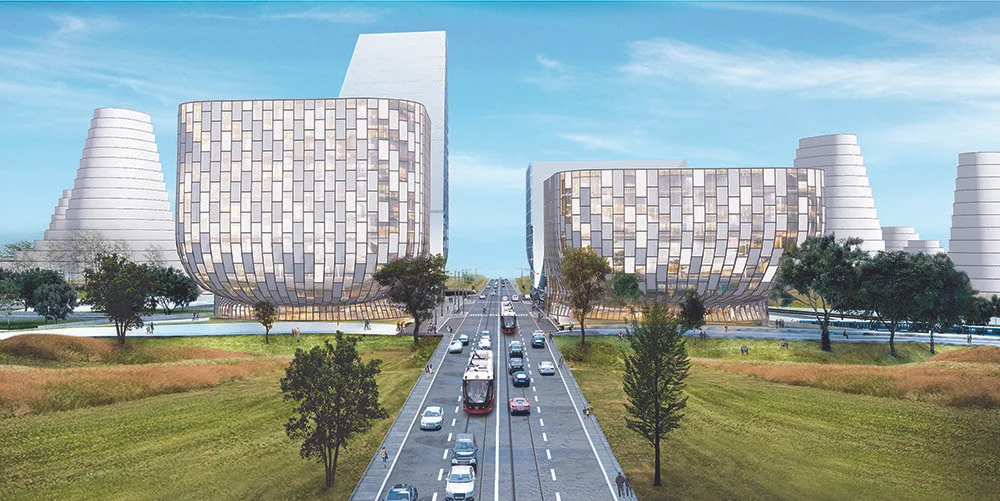The Orbit - a community of tomorrow - built today
A small town near Toronto in Canada is setting out to become a futuristic city - based on a European layout and influenced by the garden city movement.
Architecture studio Partisans have masterminded a plan for The Orbit, an Innisfil Next Generation Community that will centre around a new transit link and cultural centre.
Innisfil is near Toronto and currently not known for much apart from cottages and farms - but that’s set to change.
60 kilometres north of Toronto, and with a population target of 150,000, the development, “is a cutting-edge community where small town and rural lifestyles co-exist with the benefits and attributes of urban living.”
By concentrating Innisfil’s expansion into one place, The Orbit will preserve its natural landscape, leaving forests, natural agricultural land, trails, habitats and historic buildings untouched.
Partisans’ vision for a future of people living closer together means that their design reduces sprawl, allowing an area of two square kilometres where a traditional population would consume 50 square kilometres. This gives residents a closer relationship to nature while reducing pressure on infrastructure.
Influenced by the garden city movement, the development will feature ample trees and grass areas.
Toronto is currently experiencing a housing crisis, with people wanting access to major economic centres while also living in peaceful, rural environments.
In The Orbit, pedestrian-first streets with enhanced cycling options will be woven together with buildings, allowing the 450-acre smart community to maintain its existing lush, agricultural setting.
The design reduces sprawl, allowing an area of two square kilometres where a traditional population would consume 50 square kilometres.
A series of concentric “squircels” ( the merging of squares and circles) will meld with the region’s existing grid, emanating from The Orbit’s new transit hub. This modern version of a European city layout will also feature a fast, secure fibre optic network woven through sidewalks and buildings, and “will truly be a place to grow.”
The new GO Station transit hub, to be built within the next few years, will form the centre of the development, along with two new mixed-use towers for offices, retail and residences. Roadways will wrap around this centre point, and the Orbit will ripple out from the hub in a circular pattern.
A series of concentric “squircels” - the merging of squares and circles - will meld with the region’s existing grid, emanating from The Orbit’s new transit hub.
Influenced by the garden city movement, buildings will be grass covered and the area will feature ample trees and grass areas. With a focus on sustainability and protecting the picturesque, the city will function as a hub for startups with an ecosystem to support their growth.
“The Orbit is a clean slate to reimagine how a community of tomorrow is built today,” say Partisans. “Mobility, transit links, innovative streets and infrastructure, streetscapes, social interaction, health and wellness, a digital and connected community with a vibrant and robust modern economy based on critical thinking, technology, new tech agriculture, advanced manufacturing, artificial intelligence, combined with a vibrant “start up” energy and culture all shape the Orbit towards the future of placemaking and city building.”
The Orbit, an Innisfil Next Generation Community, will centre around a new transit link and cultural centre.





